Sourdough Mess: 30 Tips For Cleaner Sourdough Baking
This post may contain affiliate links.
Sourdough mess - does the aftermath of sourdough baking have you wondering why you bother baking your own bread?
Here are 30 tips for cleaner sourdough baking. Sourdough hacks to ensure you don't end up with flour on every surface in your kitchen and beyond.
But of course, if you do end up with a bit of mess, you'll also find all the best tips to clean it up with minimal stress.
30 Tips for Cleaning Up Sourdough Mess
Whether you're wondering about cleaning dried sourdough starter off bench tops or how to keep bench tops flour free? Perhaps you've got an issue with dough going down the drain or dried dough stuck to your counter tops.
Never fear! You'll find cleaner sourdough baking solutions right here.
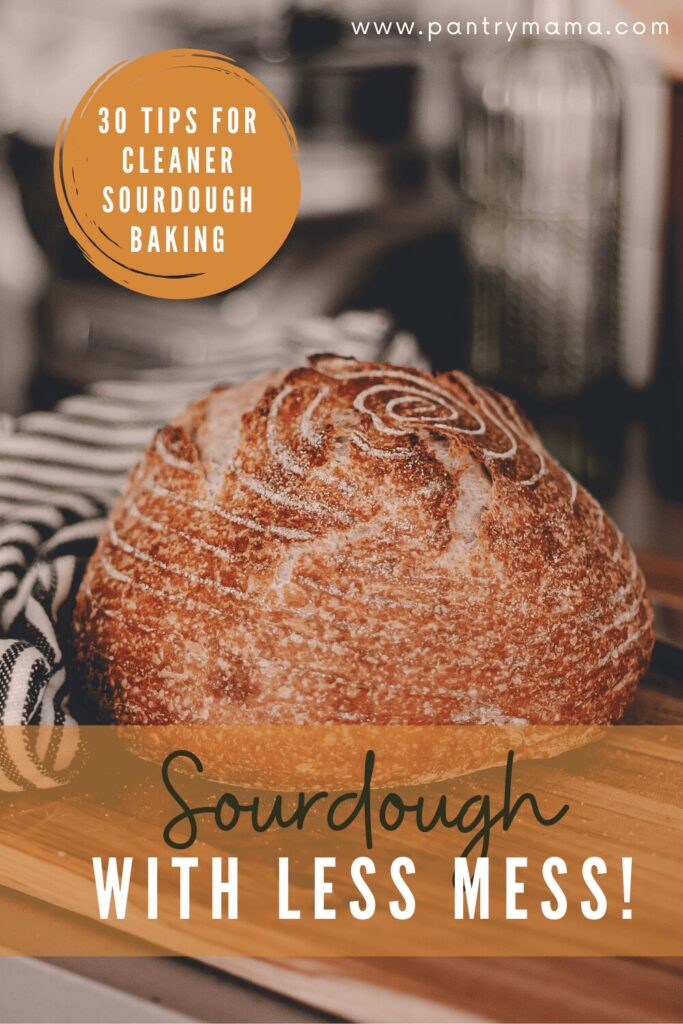
1. Planning and Preparation Avoids Sourdough Mess
Planning out your sourdough bake is really important to minimise the mess you create.
Before you start, make sure you have everything you need on hand. This is minimise the cupboard handles, fridge handles etc that you touch with flour on your hands.
Even looking at where you do your mixing and kneading, stretching and folding, shaping etc can help you to minimise the mess. For example, I always shape dough on the kitchen counter right above the bin. When I'm finished, I can scrape any excess straight into the bin in the cupboard underneath.
You'll find more tips on planning your sourdough bake here.
2. Always Wear An Apron
Before you start any kind of baking - but even more so with sourdough - pop on an apron. It will protect your clothes from flour dust and sourdough starter (whose left the house with sourdough starter on their shirt?!).
There are actually people out there who can make bread without getting a speck of flour on them. I am not one of those people!
I have a hook inside the pantry where I hang my aprons. As soon as I'm going to do anything in the kitchen, I pop one on. That way I'm not ruining a set of clothes every time I venture in.
3. Use Cold Water Only
Never use hot water to clean up sourdough mess. Hot water strengthens the gluten and makes it much harder to move the dough or starter.
Only rinse and clean bowls, plates, spoons with cold water. This will ensure that the dough or starter dissolves easily.
Ideally, you will wipe or scrape out the excess dough or starter before placing them into cold water.
4. Use Paper Towel To Wipe Utensils Before Washing
You know how sticky sourdough starter can be, right? A quick tip for cleaning the knife (or even chopstick) you use to stir your sourdough starter is to wipe it with paper towel before you wash it.
This ensures majority of the sticky starter is wiped away before it hits the sink - and that way it's not washed down the sink.
This is also a good tip if you put your sourdough utensils into the dishwasher. Wipe them off before placing them in. That way the dough or starter won't come out stuck to knives and bowls after a hot wash.
5. Don't Pour Sourdough Starter Straight Down The Drain.
This is a tip you've more than likely heard before - but I feel it's super important. When cleaning up sourdough mess - do not - under any circumstances - pour sourdough starter down the drain.
Remember making paste at school with flour and water? Well that's essentially what sourdough starter is. And eventually it will clog the drain and give you a big plumbing headache.
Rather than wasting sourdough starter, use the discard to bake something delicious! You'll find 60+ sourdough discard recipes here. You can even put it in the compost heap or feed it to your chickens.
If your starter is mature enough, you could even dry excess starter to ensure you've got some sourdough insurance or freeze your sourdough starter.
6. Rinse The Sink Immediately
Always rinse out the kitchen sink straight away if it gets covered with flour or bits of dough. If there's a lot of flour and dough, it might be a good ideas to wipe it out with paper towel first.
If you want to keep the sink clean, but still have the convenience of washing up - this nifty sink liner will help to minimise the mess. You can sit it inside the sink full of water to collect sourdough dishes. It can easily be moved. When you're finished, you can drain the water and any dough will be caught in the strainer and can be disposed of.
But always be sure to rinse it thoroughly. Flour and dough is much easier to clean when it's first spilled and moist than after it's dried!
7. Keep A Sourdough Baking Container For Cleaner Sourdough Baking
If you occupy a small kitchen - or perhaps you share a kitchen with a non sourdough baker, keeping a container of your sourdough utensils, bowls etc is a great idea.
Grab a lidded crate or box that's big enough and use it to house spare starter jars, mixing bowls, dough scrapers, bannetons etc. That way, you won't be running all over the kitchen to find what you need (and have less chance of spreading the sourdough mess).
You will also find that because your baking utensils have a specific home, you're more likely to clean them straight away and put them back. Again reducing the mess you have to clean up at the end.
8. Weigh Ingredients to Minimise Sourdough Mess
Always weigh ingredients for sourdough baking (as opposed to using volume measures like cups and spoons). Weighing ingredients is not only more accurate, it also creates less sourdough mess.
When you measure with cups and spoons, you end up with a pile of dirty dishes to wash up. Weighing means you have one bowl placed on the scales and all the ingredients can be placed directly into the bowl. Less mess, better sourdough. That's a win win!
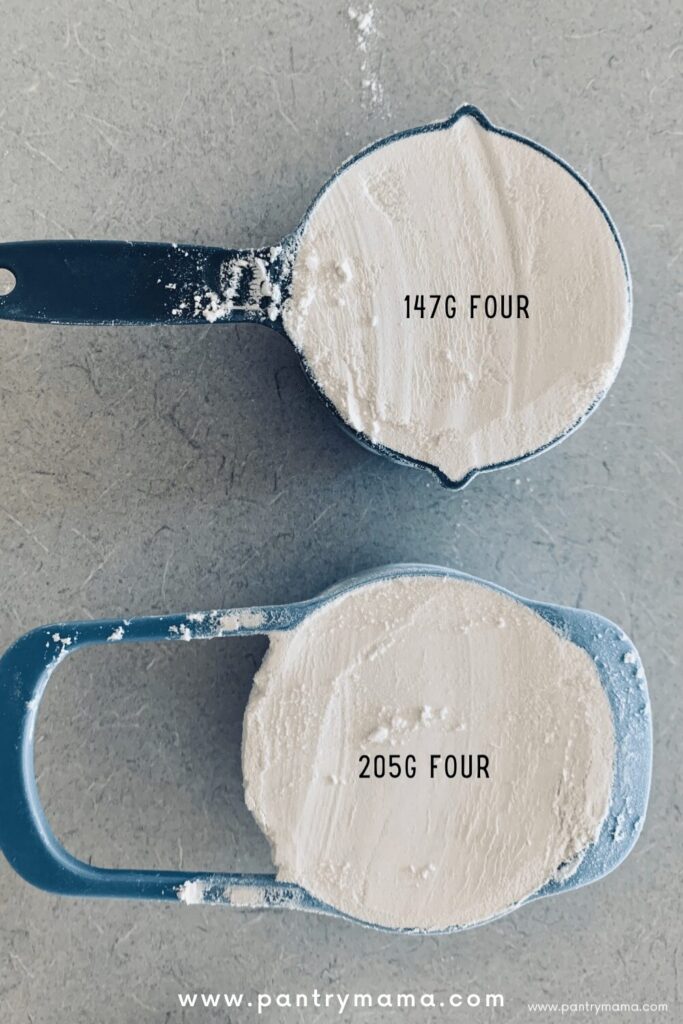
9. Always Add Liquid Ingredients First
When weighing out ingredients, weigh liquid ingredients first. When making simple sourdough bread , you would add the starter and water first, then the flour and salt.
Add the water first when feeding your sourdough starter, then the flour on top of the water. You can see me demonstrate this method of water first feeding here and also here.
This ensures that the flour and water are much easier to mix and will minimise the unincorporated flour - giving you less mess.
You will also find that adding the liquid first will minimise the flour dust that is created.
10. Use The Right Size Sourdough Starter Jar
You've probably seen someone post a photo of their sourdough starter exploding out the top of their jar ... and creating a big ol' sourdough mess.
While it can be really exciting when your sourdough starter finally doubles or oozes out the top of your jar, it can also leave you with a big mess to clean up. Which is so not fun!
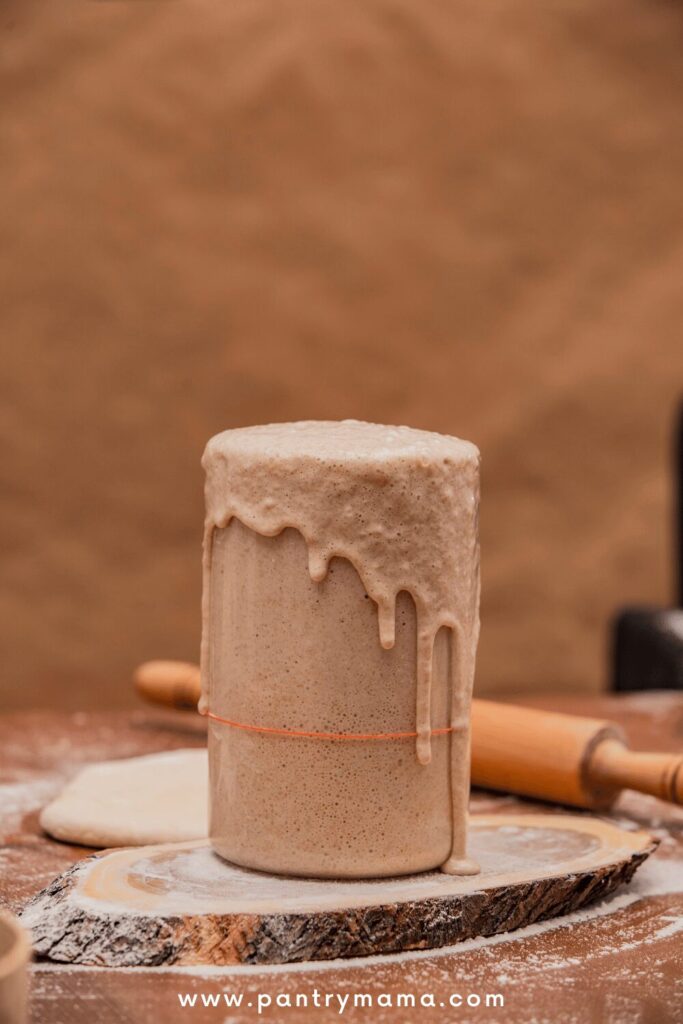
To avoid a spill like this, always use a sourdough starter jar that is 3 to 4 times bigger than your starter.
Using a jar that's 3 to 4 times bigger means that your starter can triple and it still won't create a mess.
You can use a large jar while establishing your starter and then once you've got a mature starter that is more predictable, you can reduce the size of your jar. My mature starter lives in a small ball jar like this.
For more information you can check out this guide to the best jar for sourdough starter.
11. Use A Chopstick For Your Sourdough Starter
When you feed your sourdough starter, use a plastic chopstick to stir the flour and water in. You can wipe it easily with a paper towel afterwards, minimising the mess.
A chopstick is a much easier to clean option than a knife or spatula.
12. Get A Danish Dough Whisk
A Danish Dough Whisk is super handy for premixing sourdough (prior to autolyse). It is designed to mix sticky dough. It won't retain dough like a spoon would.
It's simple to wipe clean and then rinse and will minimise the sticky flour mess on your hands at this time.
You'll find a great Danish Dough Whisk here.
You could also use a dough scraper to premix the dough - this is handy to keep the sides of the bowl clean throughout the process.
13. Avoid Flour At Shaping
Shaping sourdough bread can be tricky. And many times it can be tempting to sprinkle rice flour everywhere to make sure that the dough doesn't stick to the counter.
But flour is hard to clean off counters. Any sign of moisture and that flour becomes glue.
Instead of using flour at shaping, learn how to develop the gluten in your dough better. Concentrate on getting fermentation right.
Sourdough that has good gluten development and good fermentation will not stick to your countertops. And that way, you'll minimise the flour you need to sprinkle.
Less flour also minimises the drying of your hands.
You can see shaping with minimal to no flour here.
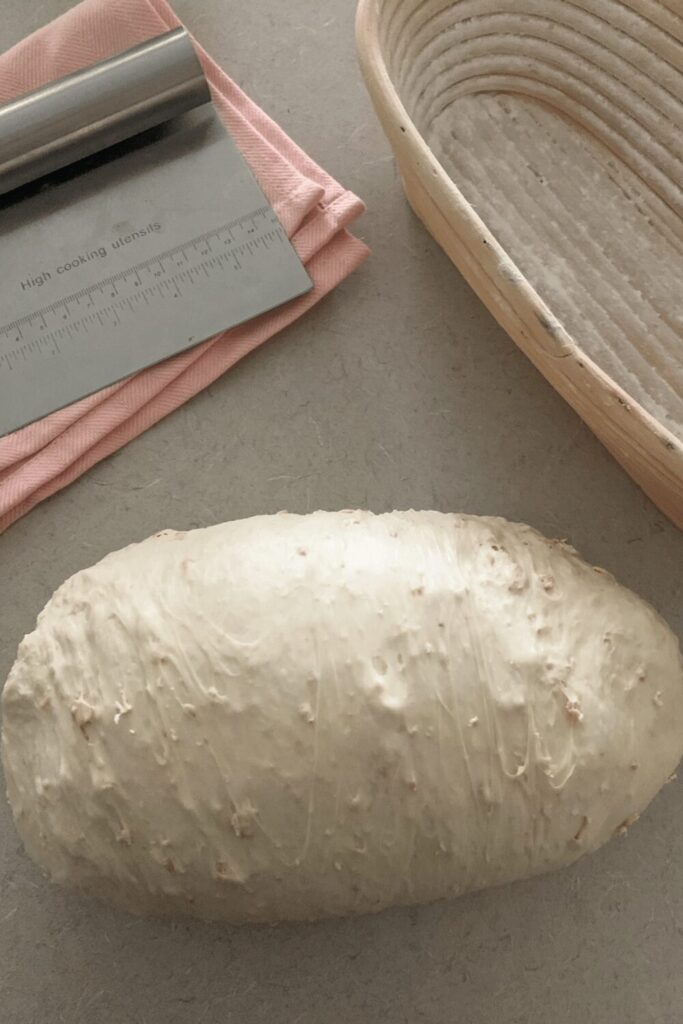
14. Silicone Mats
If you do require flour when shaping - or you are making something other than sourdough bread that may require flour, consider using a silicone baking mat.
Once you've finished, you'll be able to roll the mat up and empty the excess flour into the bin.
Kitchen counters can then be wiped clean easily, without too much flour residue.
15. Invest In A Dough Scraper
If you do use some flour, or find that you have pieces of dough on countertops after handling sourdough, don't be temped to wipe it up.
Again, when flour meets water it will turn your dishcloth into a gummy mess. Instead use a plastic or metal dough scraper to lift flour and debris off your countertop before wiping it down.
Once you've scraped your counters, spray them with water using an atomiser like this. Then use a paper towel to wipe them over. That way any flour film that is left can go in the trash, rather than onto your kitchen sponge.
If you need to purchase a dough scraper - I recommend this plastic one and this set of silicone and metal ones.
16. Scrape Bowls Before Washing
Once you've taken the dough out of your bowl to shape, give the bowl a quick scrape with a dough scraper. This gets off any dried flour or dough before you rinse the bowl. It makes clean up much quicker and ensures you're not washing dough down the drain.
If you use the dishwasher, this is also a good practice to get into.
17. Wash Hands With Flour
Ok that sounds weird right? But hear me out. If you do get sticky dough all over your hands, it can be really hard to get it off. Plus, you'll have to turn the tap on which just spreads the mess.
If you have your flour bin there, add a little flour to your hands and then proceed to "wash" your hands with the flour like you would with water. The dry flour will take off any excess dough. You can then scrape it off into the bin.
A dough scraper can also be really handy to scrape excess dough off your hands.
This can also stop your hands from drying out from washing them too much.
18. Avoid Using Banneton Liners
If you use bannetons for proofing sourdough, you may have found that they come with a cloth liner.
Banneton liners are really unnecessary, particularly if you flour the banneton well with rice flour.
Liners become another thing that needs to be washed and dried.
Try using your banneton just sprinkled with rice flour. It makes it much easier for your dough to pop out when it's time to bake.
You may, however, need to continue using a liner if you are using a banneton alternative such as a ricotta basket or bowl.
19. Cleaning Bannetons
Avoid immersing bannetons into water. Once you've transferred the dough to a Dutch Oven, give the banneton a hard tap over the garbage bin to allow any excess flour to be knocked out.
You could do this over the sink, but then you would need to wipe out the excess flour and rinse immediately.
Alternatively, you can use a stiff bristle brush to dislodge dried flour and then tap into the garbage or food scrap bin.
Allow the banneton to dry completely and then store it somewhere with good ventilation to avoid mold. Never place bannetons into sealed plastic bags.
You'll find a full guide to banneton care - including prep, use, maintenance and storage here.
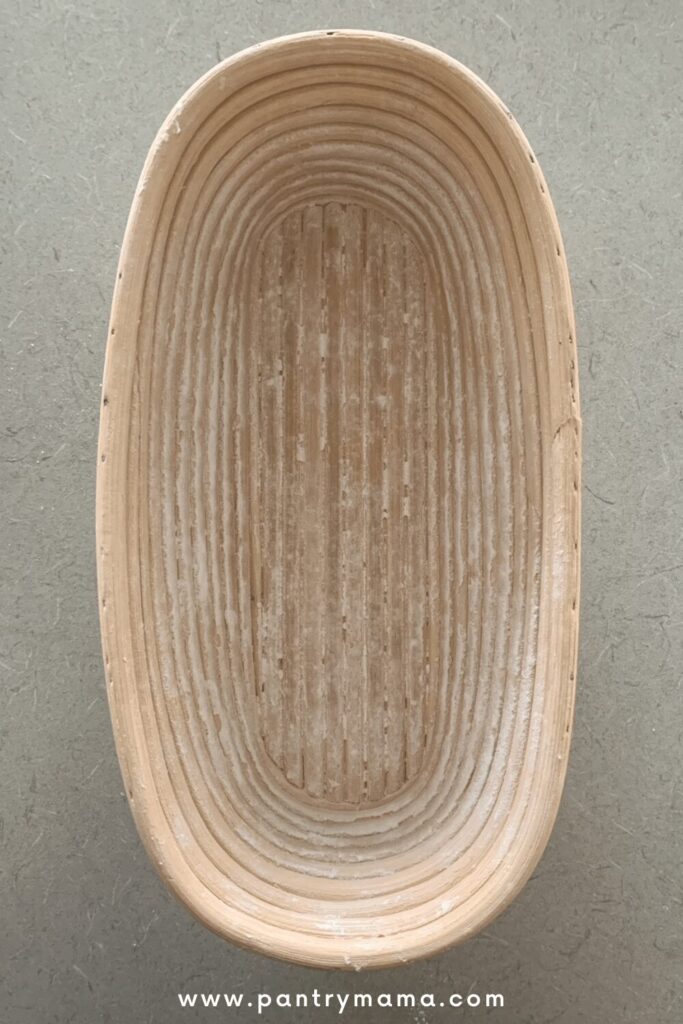
20. Leave The Dough In The Bowl For Less Sourdough Mess
Using a single bowl for mixing, stretching and folding and bulk fermentation will minimise the sourdough mess you create in the kitchen.
One bowl means less washing up!
Leaving the dough in the bowl to perform stretch and folds (or coil folds) means that there's no mess on your countertops too.
The only time the dough hits the counter is for the final shaping.
A straight sided container like this is great to keep your dough in because you can keep an eye on how much it's grown during bulk fermentation.
21. Use Parchment Paper
Parchment paper is an absolute essential when making sourdough. Not only is it super handy for transferring sourdough into a searing hot Dutch Oven, it can also make clean up a breeze.
Parchment paper will stop your dough sticking to the bottom of your Dutch Oven, creating another mess to clean.
You can lay parchment paper underneath your scale so that any excess flour is easy to tip back into the flour container. You can then use that piece of parchment to bake with, so you're not creating excess waste.
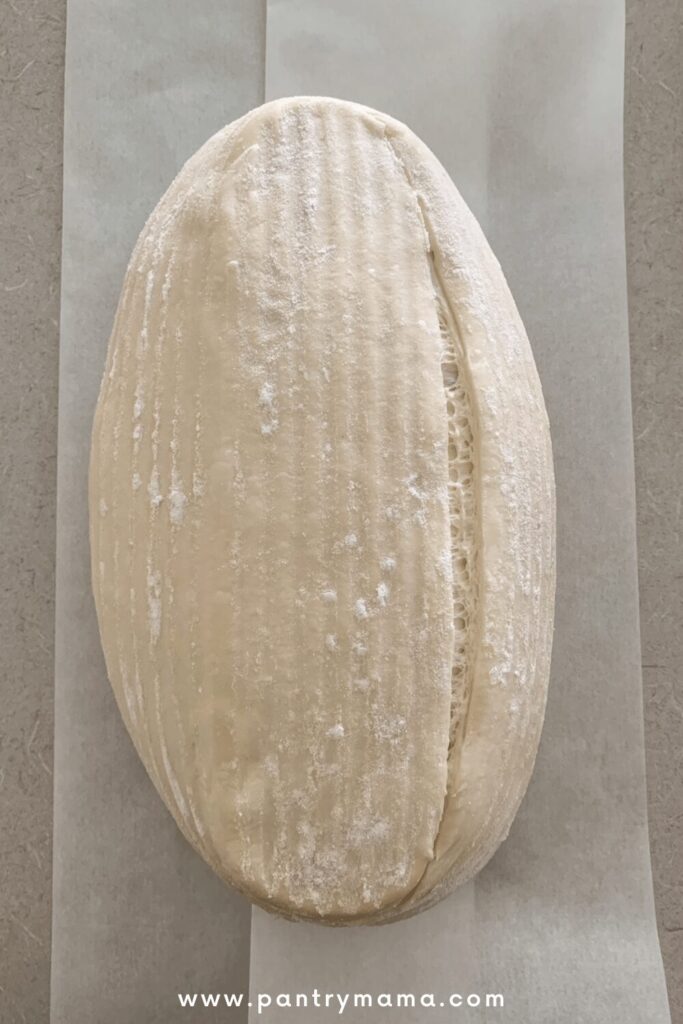
22. Washing Flour Soiled Linens and Clothes
While I always recommend using an apron, not using liners etc, there will still be times that you have to deal with flour soiled linens and clothes.
Maybe you don't use a banneton and line a bowl with some cotton cloth. Or maybe you used wiped your hands on the tea towel too many times and now it's covered in dough.
Before washing these items, try to pick off any large globs of dough. Give them a good shake outside to loosen any flour (especially for bowl liners).
Wash them in your washing machine on a cold cycle. Remember hot water strengthens gluten and sets it into the cloth.
23. Cleaning Sourdough Starter Jar
It's not recommended to change the jar your sourdough starter lives in too regularly. This is because the microbiome that is your sourdough starter get comfy in their home and don't like to be disturbed.
If you do like a clean jar, it is handy to have two identical jars so that when you feed the starter you can swap jars easily and feed into the clean jar.
Cleaning a sourdough starter jar can be tricky if it's very caked on. Soak the jar in cold water and use a dough scraper or knife to scrape off any build up.
Wash the jar thoroughly in warm soapy water once the excess has been removed or place into the dishwasher. You don't have to sterilize sourdough starter jars.
24. Using A Stand Mixer For Sourdough Bread
A stand mixer can be used to develop gluten in sourdough bread. You would use the stand mixer to knead the dough instead of performing stretch and folds or coil folds.
While some people do not like using a stand mixer for sourdough, others say that it can help to minimise the mess because it reduces the amount you need to touch the dough.
Building gluten in a stand mixer is quite a fast process as opposed to doing it by hand.
If you use a machine like the Thermomix, it will also weigh the ingredients for you too.
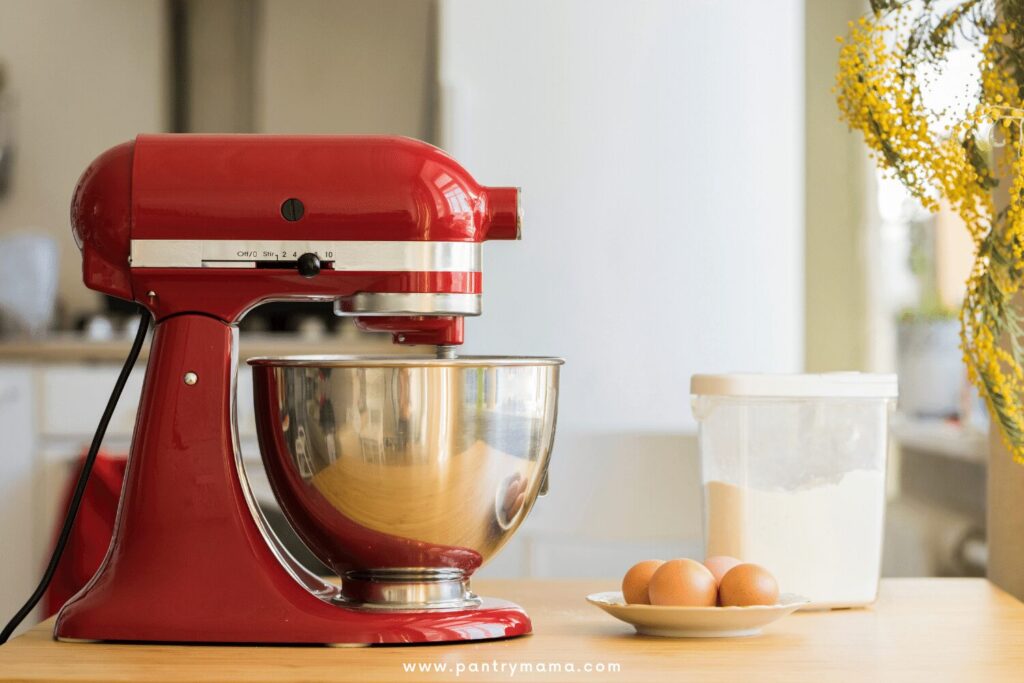
25. Store Flour Correctly
Taking flour out of bags and boxes and storing it in air tight pantry containers (such as these) can help to reduce the mess.
Sometimes bags split or flour puffs out like powder when you open the bag. Spoons and scoops also catch on the bag causing spills.
Using the correct storage containers can definitely help to contain the mess.
It will also help to keep your food storage area tidier.
Stackable containers will be especially handy if you have a designated baking area in your kitchen.
26. Use The Right Scoops And Utensils
It might sound obvious, but using the correct sized scoops and utensils for scooping flour and sugar etc is important.
Particularly if you are scooping flour from a container to a jar, you want to make sure that the scoop is not going to spill flour all around the jar. You want it to be the right size to get the flour straight into the jar.
These tablespoon scoops are perfect for feeding your sourdough starter with no mess. These larger scoops are great for flour containers.
27. Avoid Kitchen Sponges
Kitchen sponges and sourdough mess are not a good match. Flour and water create a gluey, sticky mess on kitchen sponges. This often means they need to be thrown away.
Avoid using kitchen sponges or dish clothes to wipe excess dough or sourdough starter. Don't use a sponge on counter tops until they've been scraped first.
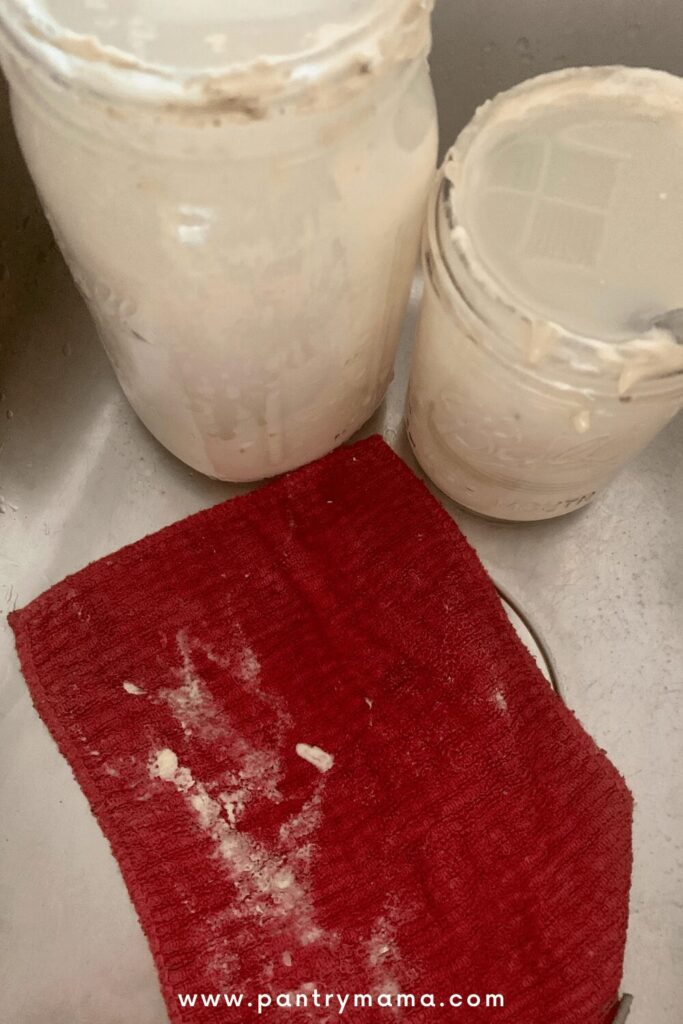
A good investment is a silicone scrubber like this or even a silicone bristle brush. Both of these can be placed into the dishwasher after a quick rinse in cold water.
28. Using A Dishwasher For Sourdough Mess
You will remember cold water is recommended for cleaning up sourdough messes. But what if you use the dishwasher?
It is recommended not to put utensils or bowls into the dishwasher if they are heavily coated with dough or sourdough starter. The dishwasher uses very hot water and this can set the sourdough starter or dough like cement.
Before placing utensils and bowls into the dishwasher, wipe them with paper towel or use a dough scraper to get the majority of the debris out. Also give them a quick rinse with cold water if they are heavily soiled.
29. Cut Bread On A Large Tea Towel
Crusty sourdough bread can create a lot of mess when you cut it. All those crumbs!
Before you cut the bread, lay out a large tea towel. You can lay the bread board over the top. Once you've finished cutting the sourdough, you can tap the bread board into the garbage or scrap bucket and then wrap the tea towel up and shake the crumbs outside on the grass.
Sometimes I'm a rebel and don't even use a bread board - I cut sourdough directly onto an old tea towel. It definitely helps to contain the mess!
30. You'll Make Less Mess As Your Sourdough Skills Improve
Just like any skill, the more you practice, the better you'll get. The better your sourdough skills become, the cleaner the process will be. And the cleaner your kitchen will be at the end.
You'll find that as you develop the gluten more effectively and you get better at judging when bulk fermentation has finished, your dough won't be as sticky. This means you'll need less flour at shaping and you'll have less residue to clean up.
Dough won't stick to the banneton, giving you less to clean.
Better sourdough baking skills mean less sourdough mess!

Further Reading
If you enjoyed the ideas in this article, you might like these:
- Guide to Bannton Care - preparation, use, maintenance and storage.
- No wait sourdough recipes - quick sourdough recipes you can mix, bake and enjoy without the waiting time.

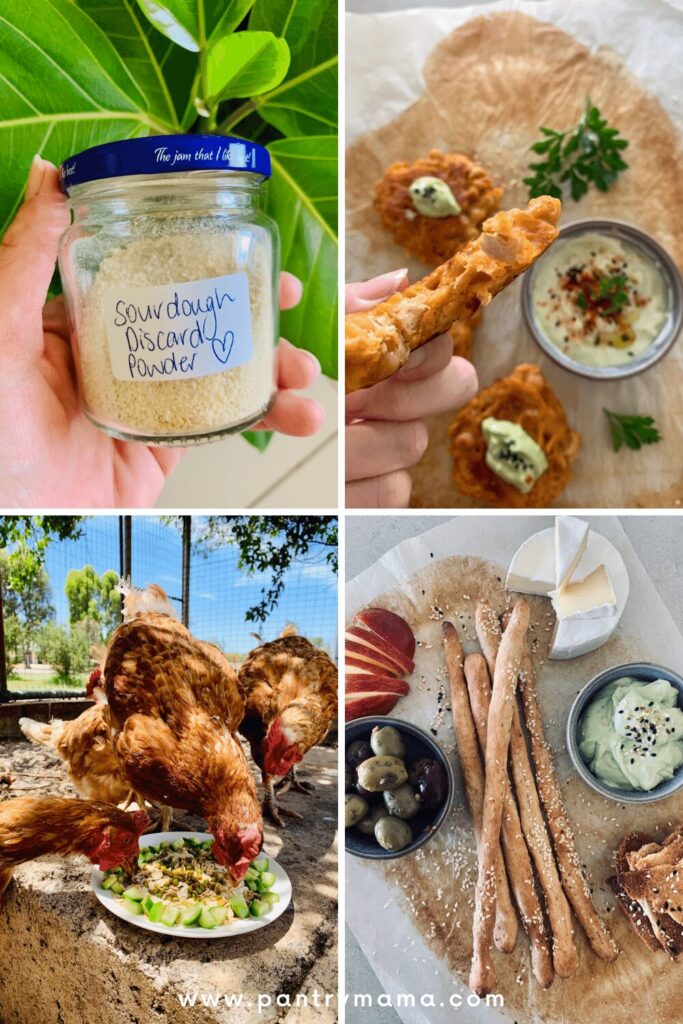
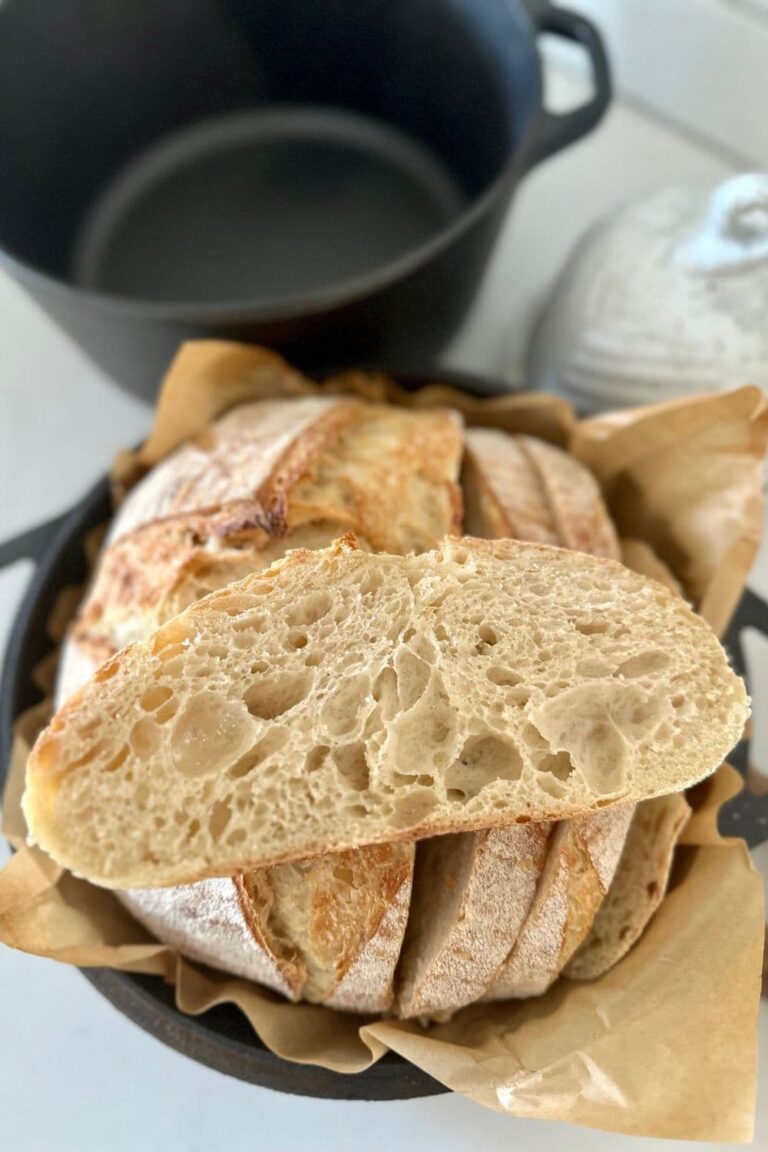
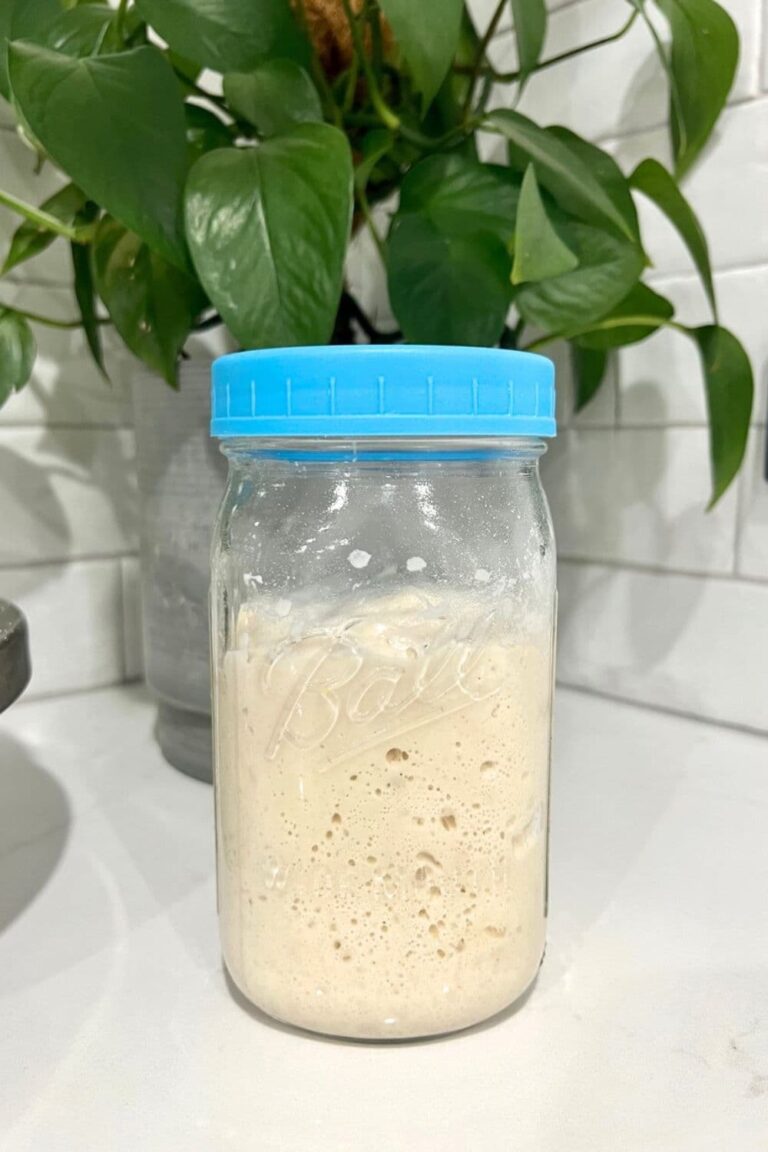
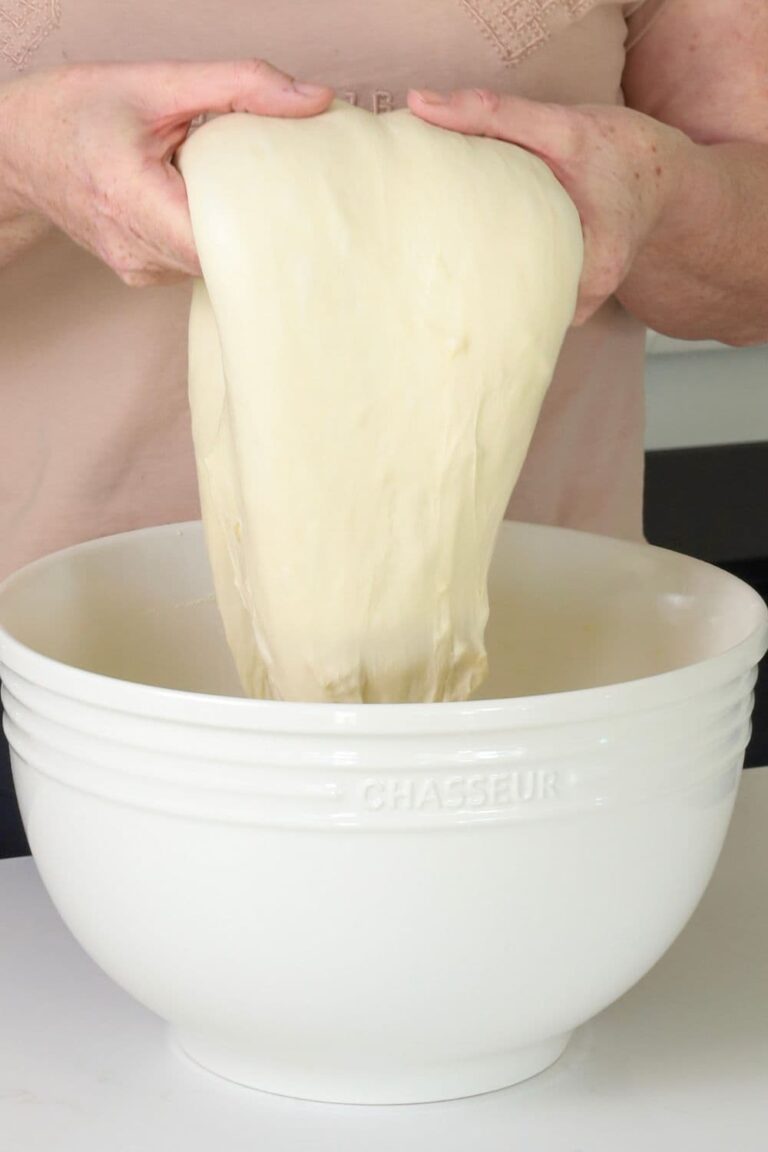
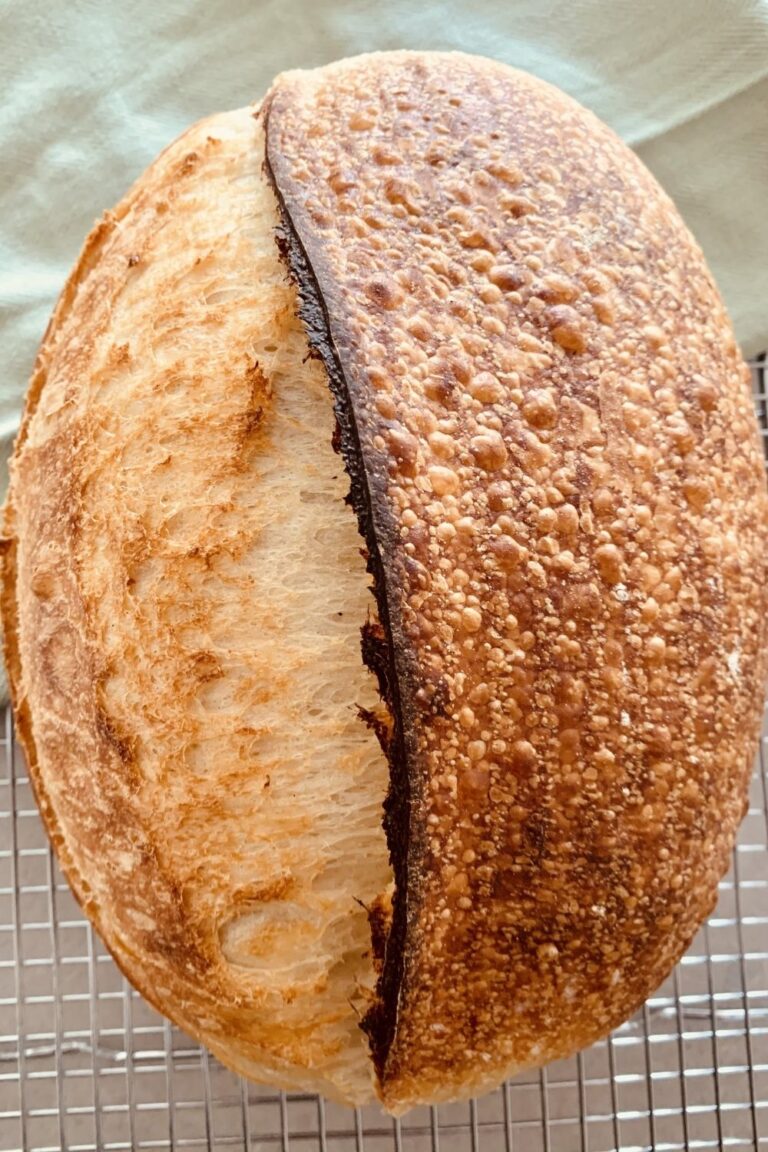

Great tips Kate!
Thank you for putting together a very comprehensive and useful list. 😁
Thank you for the fantastic tips! The constant supply of good tips and great recipes is greatly appreciated.